The Spread provides you with your comprehensive guide to why Star Wars: The Last Jedi made so many people so very angry.

A lot of people really liked Star Wars: The Last Jedi, I can understand why. Like many people, I’ve been a big fan of the film’s writer and director, Rian Johnson, since his feature debut, Brick, in 2005.
I didn’t like The Last Jedi that much but I am neither angry, upset or surprised by this. I decided to stop paying to see Star Wars films at the cinema some time before The Last Jedi came out because, honestly, I found The Force Awakens to be mostly very boring (I quite enjoyed Rogue One) and, I really cannot stress this part enough, I just don’t care about what happens in Star Wars as a story.
I tell you this to let you know that, firstly, I offer this insight into the wave of hatred levelled against it from the perspective of someone who viewed it in hindsight and, secondly, I offer it to you as someone who in no way, whatsoever, cares about “lore” and “plot twists”.
I completely agree with most of the narrative decisions that Rian Johnson made. I thought that Snoke and Rey’s parentage were terrible ideas and, realistically, he had no other choice but to cut them out of the story. They were narrative dead ends. I am of the opinion that there would be no way of developing those threads in an original, or interesting, way; despite whatever you may think about your fanfic.
Not that this matters much in the grand scheme of things because, as it transpires, the film’s problems were overly abundant in much more objective areas and it rubbed lots of different people the wrong way. So let’s begin.
It’s very emotionally manipulative
The most commonly used phrase that crops up when people describe The Last Jedi, whether in a compliment or a condemnation, is “subversion of expectation”. This film revels in doing things backwards and effectively teasing the audience. (Plenty of sword fights but at no point does a lightsaber hit another lightsaber in the film.) And then there’s the more glaring omissions of the tropes and traditions that have become famous throughout the series. (But we’ll get to those later.)
Despite all of that though, and despite Rian Johnson’s attempts to make Star Wars his own (we’ll get to that later too), The Last Jedi is very much a product of its predecessor.
Aside from being creatively boxed in by the last scene in The Force Awakens (notice how Johnson almost immediately tries to reclaim creative control by having Luke do a costume change out of what were apparently his special “looking at the horizon” clothes) it is, like The Force Awakens, essentially a remake. It lifts and reconfigures plot beats, designs and events from roughly the same position in the original trilogy’s story structure and, because actors and characters from the original trilogy appear in the films, this makes them not remakes in the minds of some of the films’ fans.
Whereas The Force Awakens was mostly, what’s generally come to be be known as, A New Hope, with a dash of The Empire Strikes Back, The Last Jedi is everything else from Empire Strikes Back with a dash of Return of the Jedi. The Last Jedi plays entirely to nostalgia and off of the audience’s emotional relationship with certain characters and events. John Williams’ score, for example, heavily revolves around themes from his work on the original trilogy. Something which becomes very apparent during the climax of the film, where it feels like they’re all being played back-to-back.
Another good example of this is a scene which almost every vitriolic hater of The Last Jedi admitted that they loved (and it’s very emblematic of the feelings behind that hatred) in which R2-D2 springs back to life for a few seconds to do perhaps the only thing that he does in the entire film. Which is to play back Princess Leia’s message to Obi-Wan Kenobi from the first Star Wars.
Everyone desires to see something original. But attempting to do something original and calling it Star Wars is only going to end up feeling like you’re using the name, and the memories, to elevate your own ideas and filmmaking techniques. Which you are, presumably, selling as being better than what’s come before. And it’s perhaps why The Last Jedi often comes off as being disrespectful.
On top of that, it’s a plan that only really works if your ideas, and filmmaking techniques, actually are better than what’s come before and…well…
The cinematography and choreography are kind of bad
Another common piece of praise about this film (that’s dished out with, seemingly, no hint of doubt) is that it is “the most beautiful Star Wars film ever made.” And, like the rest of the film, Steve Yedlin’s cinematography is intermittently quite fun and wonderful.
There’s clearly an appreciation for classical camera movement and framing of subjects. But that’s the thing. It’s very clear. To anyone with even a cursory understanding of what Hollywood films generally look like, the cinematography is very in your face. (It’s hard to miss the reference to Wings in the age of the gif and making a less impressive recreation of a ninety-year-old shot doesn’t inspire wonderment.) And, to anyone who has even a vague understanding of practical cinematography, it’s riddled with issues.
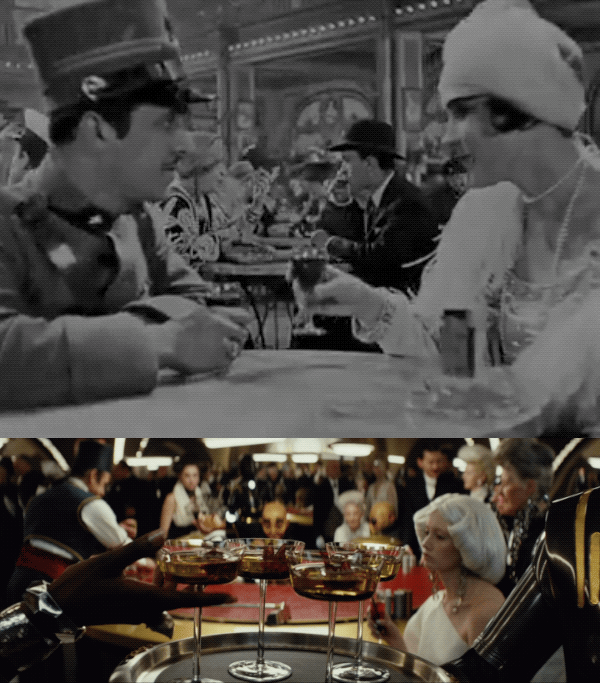
Directors of photography get very little, to no, creative license on projects of this scale anyway. (You’re never going to see Roger Deakins shoot a Marvel movie.) At best, like in all of the recent Star Wars films, they act solely as an extension of the director’s overall vision. (Yedlin has shot all of Johnson’s films.) And the film’s photography is as equally choppy as the writing and directing.
People have pointed out how there appears to be virtually no coverage shot throughout the film despite the shot-by-shot construction of scenes not being fully thought out, which is probably what makes it feel so disjointed. People will change position and location between shots. An important object disappears mid-shot. A lot of what is, probably, second unit stuff (like reaction shots and certain close-ups) is just plain ugly and the choreography, though great in certain spots, looks very clunky, and unpolished, in others.
You could blame the editing for lots of this. (The Last Jedi, like so many expensive Hollywood too-big-to-fail tentpoles, was significantly changed in reshoots and editing.) But, if you pay attention to the cinematography, it becomes clear that you can’t blame the editor for patching up problems on set.
Reaction shots were apparently a big part of the reshoots. (They’re often the ugliest, most hurried looking, shots.) And it feels like there’s still quite a few missing from key moments and actions; which contributes to this overall muddled feeling. It becomes a mystery how, and why, characters end up where they end up in the scene. Part of this is because Johnson really wants you to feel his presence in the film and it often seems like he’s sacrificing any internal logic for the sake of a visual.
For example, typically in Star Wars, the way that they were able to make engaging space battles was to confine reaction shots of the pilots in a spacecraft to intimate, interior, close-ups. Johnson, on the other hand, often moves the camera outside of the cockpit; causing the practical, and digital, elements of the shot to clash for a lot of viewers.
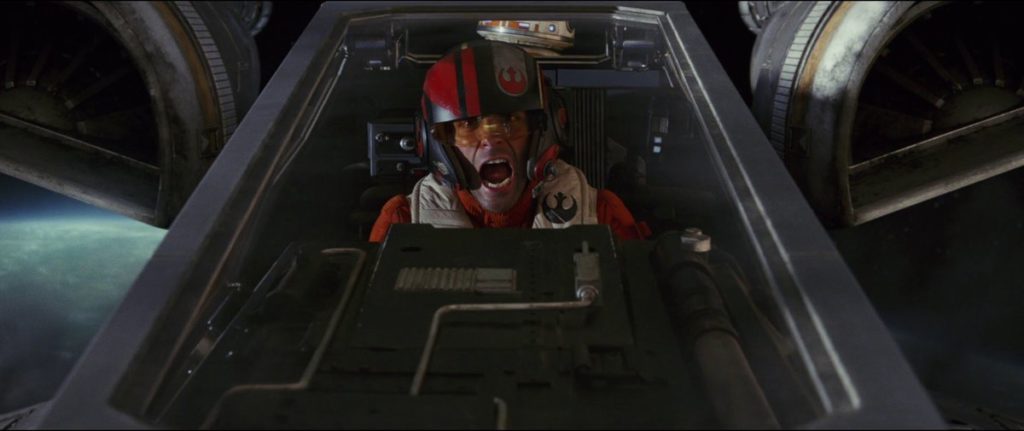
Most of it doesn’t go anywhere and probably never will
The word of the day in The Last Jedi is procrastination. One of the most identifiable of the film’s, very identifiable, themes (we’ll get to those next) is failure. Which syncs up nicely with the film’s overall mantra but does have the unfortunate side effect of all of the film’s subplots (which compose the majority of the film’s runtime) being completely pointless.
People often single out the side quest to “casino planet” Canto Bight as being particularly indefensible (and I’m inclined to agree) as well as Admiral Holdo’s actions being deliberately irritating, and irrational, in order to drag out the film with another subplot and make a half-baked almost-point about feminism. I think.
Fundamentally, what this means is that character development comes to a standstill via the way of going around in a big circle.
Rey comes to the conclusion that her past is unimportant and that the meaning in her life lies ahead of her, which is the same conclusion she reached in the last film. Finn decides to stop running from the responsibilities of the war and fight for something more than himself, which is the same conclusion he reached in the last film. Kylo Ren feels his thirst for, and understanding of, power grow only to be inevitably humiliated, which is…you get the idea. It does leave a few things open ended but they might actually be the least exciting things in the film.
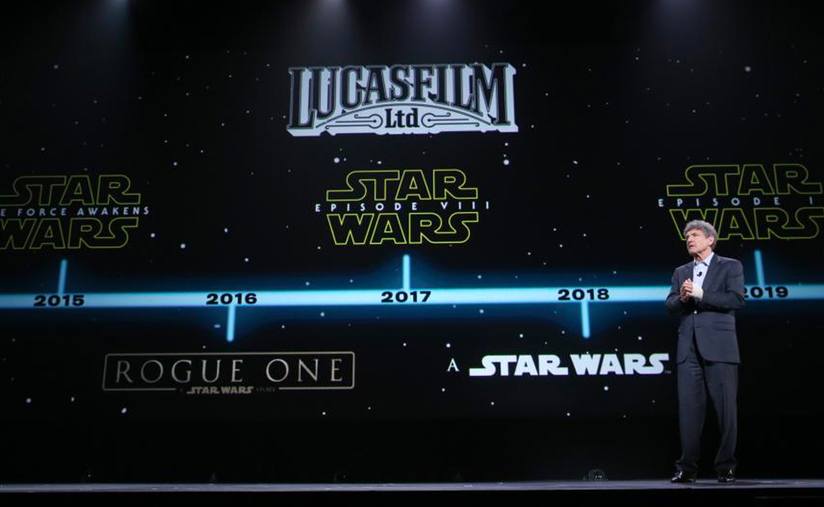
One of the most tedious things about “franchise” film properties is simply that they exist purely for their own sake. Meaning each instalment is not a chapter in a story - it is an advertisement for the next instalment. And the result of The Last Jedi is a lot of, lifelong, Star Wars fans questioning whether they will pay to see the next instalment.
Personally, I think it’s great if Rian Johnson wants to break way from traditional Star Wars. I’d much rather he was funded to make his own original projects but, if these things have to exist, then it’s better for them to at least try to be original. And there’s the problem. For all of the film’s talk of breaking away and being new, it hasn’t actually done it yet.
As mentioned, all Disney’s Star Wars has done so far is cash in on what the series has already accomplished and if you were really interested in doing something new, and unique, in the future then you wouldn’t hire JJ Abrams to make your next film. Replacing Colin Trevorrow with the director of The Force Awakens, a far more devout remake, is a clear sign that you’ll be playing it safe.
It’s not helped the claims that Star Wars is creatively bankrupt. Odds are, the next film will be X-wings, TIE fighters and the Millenium Falcon fighting over a giant superweapon in space while a lightsaber battle rages somewhere else. As always.
A tremendous amount of the film’s main detractors (who are, incidentally, quite big fans of The Force Awakens) have cited reports of JJ Abrams’ ideas for characters, like Snoke, being discarded. They’ve also voiced beliefs, and desires, towards Abrams simply bringing characters, that The Last Jedi killed, back to life. Discarding Johnson’s ideas like Johnson, supposedly, discarded his. (There’s no reason Abrams can’t turn Rey back into the descendant of somebody important via some “certain point of view” malarkey.)
He’ll certainly have to kill at least one main character, Princess Leia, offscreen, as the thread which Johnson left for her character is now undoable, and he might not stop there. The only real, lasting, addition to the cast that Johnson made was Kelly Marie Tran’s Rose who has proven to be a very unpopular character and was left in a coma which she can easily just not wake up from.
Overt symbolism
Considering that it’s a film with such a heavy-handed approach to visual metaphors that it expresses its central theme of duality by giving two of its characters each one half of a yin yang BFF necklace, it’s not surprising to see that The Last Jedi enjoys beating you over the head with things.

Whether it’s the black and white colour schemes in the costumes or having two characters try and grab the same object, only to have their equal power displayed by that same thing breaking perfectly in half, The Last Jedi pulls out every trick in the book and they are all as old as hell.
A big, overlying, problem with this, as touched on before, is that most of its themes feel like cheating. Don’t like that most of the film doesn’t go anywhere? Well failure is one of its themes. Don’t like how it lifts moments, almost ad verbatim, from previous films? Well one of the themes is how time is cyclical, so it’s actually very deep. (I’m pretty sure Lucas used that one for the prequels: “It’s like poetry, they rhyme.”)
Apparently, there’s no need to explain why Rey is so powerful through some parentage side plot; it turns out that she’s the villain’s equal and that means that all of her skill and power is a result of his own. Which is fairly problematic for the feminist image that these films are attempting to spin around themselves but that’s a much more complicated discussion for another day.
Mostly though it’s that, like with the cinematography, it’s so constantly in your face. I cannot be the only person who almost barfed when they showed that shot of the one sun setting while the other sun rises. I mean, dear lord. There’s something just so tacky about it. It makes all of Lucas’ ethical lecturing in the prequels seem downright subtle.
That’s what makes it so bad. Not that it makes people appreciate the prequels more by comparison. (That’s kind of lovely, actually.) It’s that none if it is really that new - it’s just handled much more poorly.
Your standard, vaguely Orientalist, Western bastardization of Eastern philosophy has been around for ages and is a big part of Star Wars, as is the very concept of storytelling and mythology. But The Last Jedi doesn’t really add anything to that conversation, it just reframes it in a more obvious way. It attempts to fix something that isn’t broken and this botch job comprises our next few points.
The comedic timing is completely off
In another of the film’s, almost aggressive, uses of symbolism, Luke Skywalker explains “the force”, and its power of balance, to Rey; his yin yang reflecting pool just next to him. “Balance. Powerful light, powerful darkness.” It’s an idea that permeates through to the core of the film and it might be the reason behind the film’s groan, and wince, inducing attempts at punchlines.
There is an interesting theory, which is as valid as most others, that Rian Johnson intentionally tanked this film; in a sense. There’s something that’s so close to anti-comedy about The Last Jedi (it has a very weird relationship with physical comedy) but it goes past it. It’s like being off-offbeat.
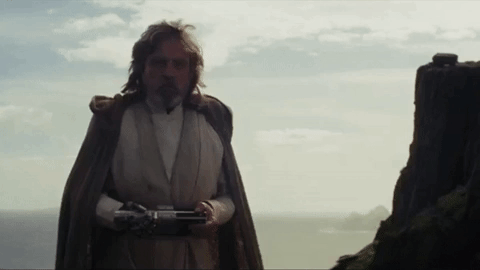
Offbeat comedy still has its own sense of rhythm, it’s just subversive because it riffs on the mainstream; almost in a parody of conventional style. Like jazz or experimental music. The Last Jedi has a conventional rhythm, just played very badly and so consistently, especially for a film of this size and importance to a whole film studio, that you can’t help but wonder if it wasn’t on purpose.
Thematically, a big part of the film is balance and therefore, by extension, imbalance. War is conflict and conflict is imbalance. So did Rian Johnson intentionally make the comedy in The Last Jedi clunk to illustrate a theme of disharmony in the universe and story? Maybe.
But, if we’re going to employ Occam’s razor, the more likely answer is that this is something that Disney does quite commonly, as does big CGI blockbuster Hollywood in general. Which is to sell a chapter in a story as being dark, and heavy, to create gravity, and interest, only to then, in accordance with their brand, overcompensate for any darkness with copious amounts of slapstick.
It happens a lot and they almost always have blunt, brooding, sub-titles like: The Last Jedi, Into Darkness, The Dark World, Fallen Kingdom. It’s the Empire Strikes Back Syndrome that’s infected Hollywood since the 80s. You have to make the sequel darker but how do you do that when all people really want to pay for in this market is extremely upbeat comedy? The result - imbalance, planned or otherwise and people don’t always like it. If nothing else, it’s getting a little old at this point considering how much The Last Jedi resembles other films outside of Star Wars.
A lot of it can simply be attributed to bad screenwriting. There’s an actual “Your Mother” joke in the first five minutes that really doesn’t set the tone off right, not to mention people’s vocabularies. It’s one thing to change certain character traits for the sake of your story but characters start using, almost colloquial, terms that you wouldn’t have thought existed in that universe.
It removes all of the tropes but just replaces them with tropes from other popular American films
An uncommonly long running time. Minimal use of screen wipes. No time-jump. Flashbacks. Eschewing of the standard archetypes and traditions. (The Wilhelm scream is hidden in the film but I’m not sure if that was Rian Johnson’s decision or just snuck past him.) The film emphasises its mission statement as brazenly as it can: “Let the past die. Kill it, if you have to. It’s the only way you can become what you were meant to be.” Out with the old and in with the new and what is the new? It’s the old, again.

There’s a lot of Back to the Future in here. (I can’t be the only person to see the flux capacitor resemblance up there, can I?) Not just in terms of that odd, low angle, mugging that people start suddenly doing in this film but in terms of an entire moment lifted straight out of the films. Johnson admits it as theft in the director’s commentary (“steal from the best”) but admitting it doesn’t make it any less of a theft.
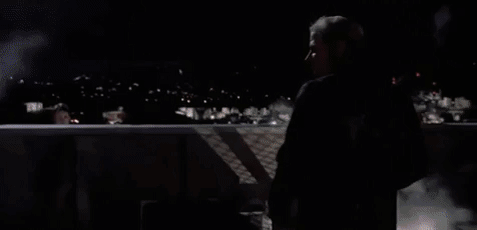
It’s hardly illegal or anything, it’s not even that abnormal, but it is a little lazy. Rian Johnson really wants to give you memorable moments in this film, and he really wants you to notice him handing them to you, but he so rarely engineers any of them himself.
Perhaps as a riff on the Kurosawa samurai influence in the original Star Wars, there’s a heavy Japanese anime vibe to The Last Jedi and, aside from being maybe a little gauche, it really highlights how unoriginal the big turns in the story are; both narratively and visually.
There’s also quite a lot of Matrix in there, which is not surprising since it’s the next biggest example of an American, live-action, pastiche of Japanese anime.
Bringing it back to vague Orientalism, The Last Jedi goes for the archetypal structure so hard that it, essentially, ends up having an almost shot-for-shot recreation of the The Matrix’s finale.
Luke Skywalker, having now found his balance and achieved a state of “oneness” with the universe, walks fearlessly at the outmatching forces; effortlessly brushing their best salvo of an attack aside and proceeding to engage the main, strongest, villain in single combat. Wherein which, they humiliate said villain by dodging them with relative ease, not allowing them to land even a single blow.
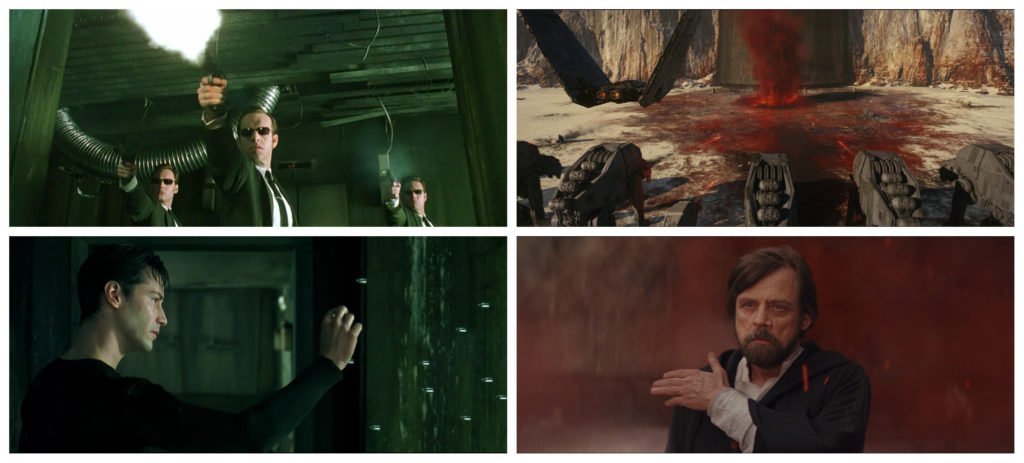
If absolutely nothing else, it really demonstrates how unimportant recreating your own version of Star Wars is; especially when you didn’t really design any of the characters. At least, any of the ones that people liked.
A lot of people really enjoy Admiral Holdo’s sacrifice, and starry explosion, but I’m not sure how many people would say they actually cared about her character. And the single frame, black and white, action cuts (from every single anime ever made), coupled with that intrusive silence, smacks of cheap razzmatazz to others. Something akin to a “jump scare”, more an involuntary response than a considered, and emotional, one.
So much of The Last Jedi feels like a screenplay that Johnson wrote decades ago and kept in a shoebox, if you know what I mean. His dream Star Wars film where he would be the one inspiring millions of young people to write their own odes to his film.
An overwhelming sense of self-importance
As a small child enthusiastically recounts the events of the film’s finale to a gaggle of enraptured children in what, much like the last scene of The Force Awakens, is really more of a post-credits sequence but can’t be a post-credits sequence because Star Wars is theoretically above all that, it becomes quite apparent how in love The Last Jedi, and Star Wars altogether now, is with itself.
It’s not a unique phenomena at all, this equivalence of cinema and cultural narrative, and it’s become very manufactured in Star Wars.
The sheer fact that the film exists is supposed to inspire generations of children to achieve greatness in the name of good and, aside from that kind of hype essentially being guaranteed to backfire on itself, the star that The Last Jedi keeps putting front and centre throughout the film is Rian Johnson.
I’ve talked a lot, throughout, about Johnson imposing his presence as an auteur on the audience and the unavoidable reason for why it doesn’t work here is the same reason that nobody had tried to do this before. It’s certainly the reason why I lost interest in Star Wars and I think, deep down, the same is true for many long time fans.
Star Wars as films, as a brand and as an overarching mythology is the result of countless people’s work. But if you’re ever going to associate Star Wars with an individual then that individual will be George Lucas. His creative vision, good and bad, was what I found interesting about Star Wars.
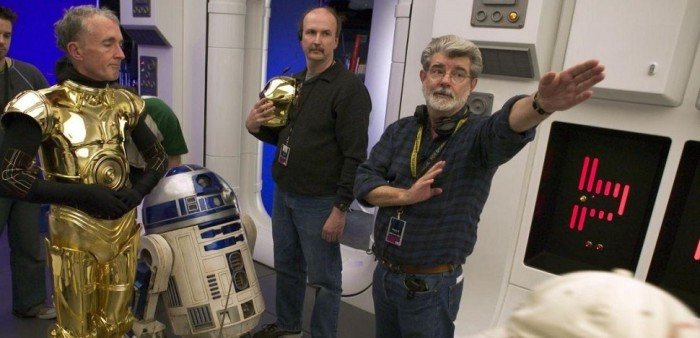
His ghost still haunts these films and it likely always will. It doesn’t matter how talented, or recognizable, or crowd-pleasing a director you are. People will never think of Star Wars as belonging to anyone other than Lucas. The company that makes them still bears his name.
So this is why those, somewhat-overzealous, fans feel betrayed; it’s hard for them to interpret this as anything other than saying that they don’t matter. It’s not an insult, per se, it’s just a calculated decision. It’s Star Wars in name only, it acts like it doesn’t need the core fanbase to survive now that it’s in the mainstream and there’s its real problem.
Now that Star Wars has officially progressed from being a curiosity to a commodity, like stock trading twenty-four hours a day around the world, it’s competing in a much bigger marketplace and the truth is that, in that marketplace, there’s nothing that really sets it apart.
Ask yourself, honestly, what is it about these films that’s unique now? What could a child, experiencing it for the first time, actually get from these things that they couldn’t get from a dozen other sources? In terms of pure sentiment, there’s little that The Last Jedi offers that kids didn’t get from Disney a month earlier in Thor: Ragnarok; and with much more well-executed comedy.
The weirdest thing is that you can actually watch an entire film market, the fastest growing in the world, engage with Star Wars for the first time. Obviously there are people in China who will have lived, or worked, in the West and know about Star Wars but, for the most part, it’s a bit of a mystery there, as none of the films were screened in cinemas until Disney bought Lucasfilm, and good God does China hate it.
Star Wars’ ever-worsening failure at the Chinese box office is, perhaps, the most cited example of the brand’s lack of a future. Without decades of nostalgia, and emotional attachment, backing it up (footage from the Chinese version of the film shows unique subtitles that give a breakdown of a character’s relationships and history just so their motivations can make sense), Star Wars doesn’t seem to have a leg to stand on in today’s market.

Graph from Bloomberg
Many people claim that Solo: A Star Wars Story‘s less-than-stellar box office (it’s only made, roughly, 40% of what, previous Star Wars spin-off, Rogue One had made by this point in its run at the US box office; which is still Star Wars’ biggest market) is primarily attributable to fan backlash over The Last Jedi.
Carrie Fisher
There are so many points that I’ve glossed over because, as I said before, I just really cannot bring myself to care about Star Wars as a story and I think it’s at its best when it’s nonsense anyway.
I’m not saying that the issues that people have taken with characterisation are invalid or unimportant. Though I don’t echo those opinions, I have found it very enlightening to listen to people make their cases about it. It’s, particularly, the genuine emotion behind their arguments that makes them so interesting and, while I definitely still feel that including the original cast and designs (in any way) was just guaranteeing that millions of people would end up being disappointed, I’ve come to appreciate how much characters like Luke Skywalker meant to some people and that Johnson’s depiction of him seems genuinely cruel, and hurtful, to them.
I may not have that level of emotional attachment but even I can see how witnessing some of the final images that you associate with, legendary film icon, Carrie Fisher becoming her somersaulting backwards into the infinite void of space, a millisecond after Admiral Ackbar dies screaming in a fireball, can leave a bad taste in the mouth. I’d actually be lying if I said I didn’t literally grimace, mouth open and everything.
Johnson couldn’t alter Fisher’s story arc because it would have taken too much time and the only thing that really seems to matter about these films (or any Hollywood tentpole film these days, really) is hitting the scheduled release date. The original shoot was delayed due to poor weather and rewrites, the details of which will probably never be fully known to the public, but The Last Jedi was originally scheduled to begin filming before The Force Awakens even came out.
With all the resources in the world, making a film of this scale (start to finish) in two years still makes quality a matter of luck. Even Marvel Studios, typically, leaves at least three years between direct sequels.
The Last Jedi is such an odd, melancholic and un-cathartic note to leave her character on. The fact that Harrison Ford and Mark Hamill are still with us, while their characters are dead, makes it seem like the producers bet on the wrong horse to fans who thought of these films as sequels. To all the others, it’s becoming increasingly clear that all of this was a bad idea to begin with.
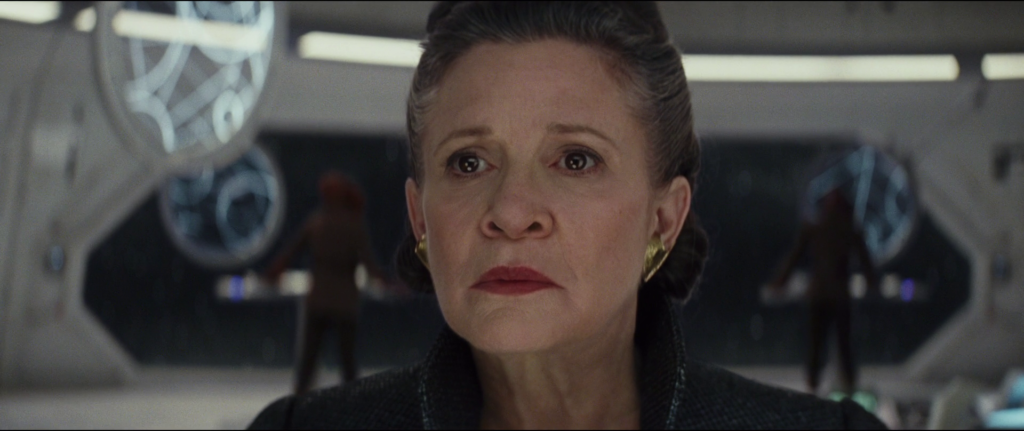
It’s been fascinating watching fans who maligned Lucas’ prequels so severely go nuts for The Force Awakens only to steadily come to terms with the fact that they hated it over the course of the next two years. Modern Star Wars films have become a near-perfect example of the tragedy of getting exactly what you wished for.
Lucas’ original trilogy was far from perfect (and it’s important to bear in mind that, to many people, if you can’t badmouth, and make fun of, Star Wars then there really isn’t any point to it) but it was pretty airtight. Everything that needed to be wrapped up was wrapped up, all of the characters completed their arcs.
Even if you aren’t satisfied by the ends of Han Solo and Luke Skywalker in the new films, and oh so many people aren’t, their onscreen deaths provide some sort of closure for their characters. One which Carrie Fisher’s Princess Leia will never fully get now. Her character’s end will now, most likely, be explained in a text scrawl or expositional dialogue.
There’s a tearful moment with Laura Dern saying farewell that makes for a good, makeshift, final goodbye but, for many people, this was the moment when they first, truly, realised that this revival of the title isn’t enough. And that it, likely, never even could have been.


